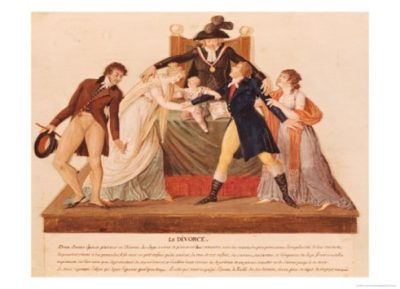HIST 3113A: The French Revolution: 1789-1799
Fall Term 2024
Instructor: Professor Rod Phillips
Scope of the course
The French Revolution was not only central to the history of France and Europe but had impacts on the wider world. Its legacy includes images such as the guillotine, institutions such as the metric system, terms such as ‘Terror’, and the notions of ‘Left’ and ‘Right’ on the political spectrum. Some of the individuals associated with the Revolution are household names: Marie-Antoinette, Robespierre, Napoleon. In France, the Revolution is ever-present in the form of the national flag, the national day (Bastille Day, 14 July), the phrase ‘Liberté Egalité Fraternité’ (‘Liberty Equality Fraternity’) on all public buildings, and the national anthem, La Marseillaise.
The dominant image of the French Revolution in the popular imagination is violence – think of the guillotine, the Terror, the European wars, the executions of Louis XVI and Marie-Antoinette, and Charles Dickens’s A Tale of Two Cities. But that is only one of its dimensions. It was also a period when institutions of all kinds – political, legal, social, cultural, religious, and military – were fundamentally and often peacefully reformed.
Some reforms are well known, such as the abolition of the monarchy, but other achievements of the French Revolution are not. It abolished slavery in France’s colonies. It gave civil rights to Jews and Muslims. It separated Church and State for the first time in Europe. It reformed family law, giving women and men equality in inheritance, secularizing marriage, and permitting divorce for the first time in France. It criminalized violence against women. It decriminalized homosexuality. It created the first mass citizen-army. It began a limited social welfare and pension scheme. It began to make education available to all. Reforms such as these affected all aspects of society, culture, and the economy.
The French Revolution is the most-studied decade in world history and there is a wealth of information in many languages on almost every aspect of it. We cannot possibly cover everything in this course, and instead we will focus on a number of topics under the general heading of ‘reforms’. Topics will include women’s rights, religions, the family, education, food security, and poverty.
In each case we will ask four questions: what was its status before the Revolution? How did the Revolutionaries view it? What did they do about it? What were the results? When we look at women’s rights, for example, we will examine the status of women in France before the Revolution, the debates on and by women from 1789, the emergence of a women’s rights movement, laws and policies affecting women, and the overall effects of the Revolution on women.
The aim of the course is to give us a sense of how comprehensive and radical the Revolution attempted to be. It was not simply a matter of replacing one political system with another, but of transforming social relationships – what the Revolutionaries called ‘regeneration’. A regenerated France would be a nation of free citizens (Liberty) who enjoyed equal rights (Equality) and worked together to create a new society (Fraternity). As we will see, many of these aspirations failed – sometimes because they were unrealistically ambitious, sometimes because they were thwarted or annulled by the regimes of Napoleon and the restored monarchy that followed the Revolution. But they were intrinsic to the exciting revolutionary project that began in 1789.
Course format
This course will meet in person for lectures, with ample opportunity for discussion.
Aims of the course
There are many interpretations of the French Revolution, and this course will give you the opportunity to explore them and to assess their strengths and weaknesses. We will also consider some of the questions historians and citizens confront today. How should we assess historical figures – in terms of their context or in terms of modern values? Current debates about removing statues and renaming places and institutions were prefigured during the Revolution, when there was an attempt to remove all references to kings, nobles, saints, and other undesirables. Statues were torn down, and towns and streets were renamed. But then the Revolution experienced the same process, and we look at how it has been remembered, celebrated, and condemned. As we confront these questions we will engage with various media: printed texts, paintings, drawings, and sculptures.
Assessment
There will be one reading response, one essay, and a final (take-home) exam. All the readings for these assignments will be available on-line.
Textbook
To be decided
Questions
For more information, please contact me: roderick.phillips@carleton.ca


